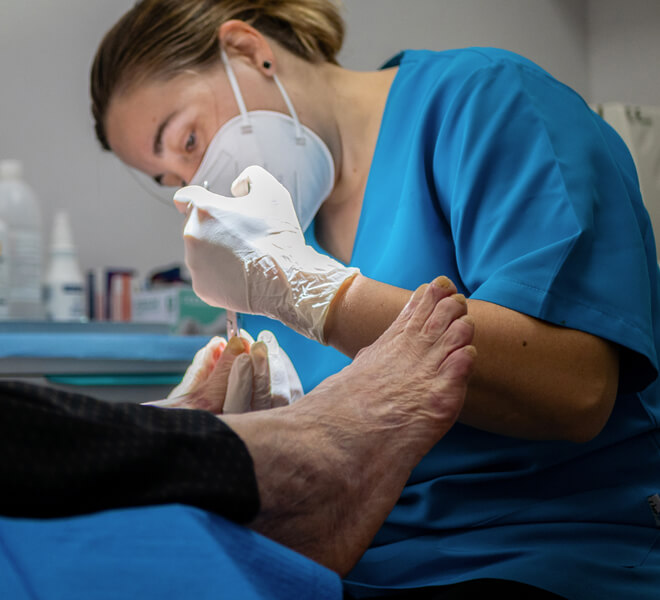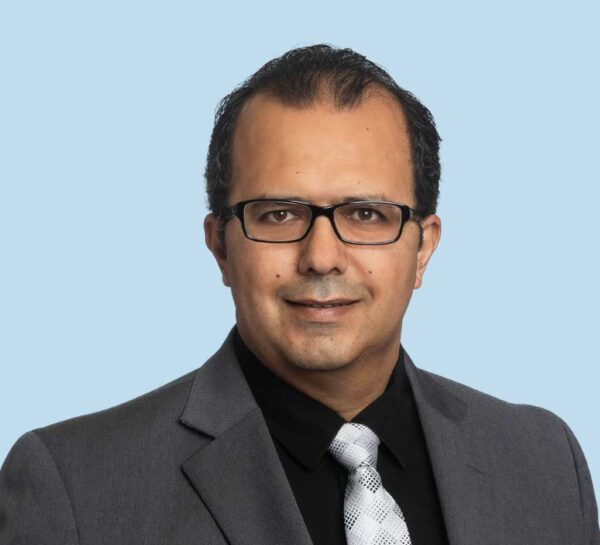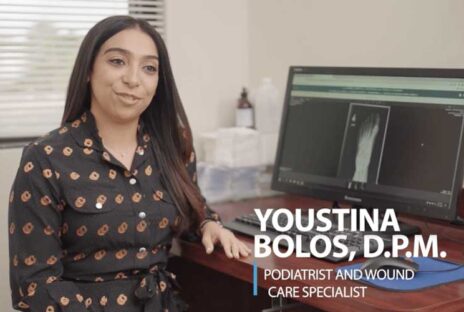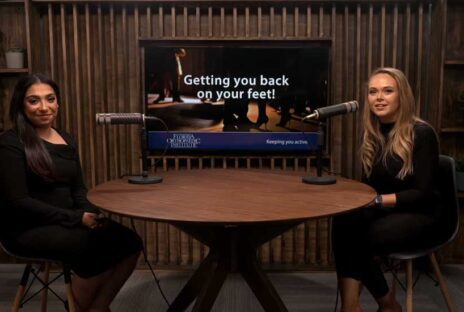Exceptional care from orthopedic podiatrists
Treatments for foot, ankle & lower leg pain
Podiatry (or podiatric medicine) is the study, diagnosis and medical and surgical treatment of disorders of the foot, ankle and parts of the leg. The podiatrists at Florida Orthopaedic Institute diagnose and treat any foot and ankle conditions. Using a personalized care plan, our podiatrists treat underlying health issues causing the symptoms and help prevent future foot pain and injuries.

Learn more about
Orthopedic podiatrists at FOI
Non-operative physicians



Common foot conditions treated by podiatrists
Our podiatrists are experts at addressing the symptoms and underlying conditions causing your foot pain, including:
- Abnormal Growths
- Achilles Tendonitis
- Arthritis
- Athlete’s Foot
- Blisters
- Bunions
- Diabetic Foot Ulcers
- Fallen Arches
- Flat Feet
- Foot Deformities
- Foot Fractures
- Fractures & Sprains
- Fungal Toenail Infections
- Gout
- Hammer Toe
- Heel Pain
- Heel Spurs
- High Ankle Sprain (Syndesmosis Ligament Injury)
- Infection Management & Amputation Prevention
- Ingrown Toenails
- Mallet, Hammer & Claw Toes
- Metatarsalgia
- Neuromas (Foot)
- Plantar Fasciitis
- Plantar Warts
- Sports Injuries
- Sprained Ankle
- Turf Toe
- Warts
FOI podiatrists also treat patients with the following symptoms:
- Arch Pain
- Cracked Heels
- Cracks or Cuts on the Feet
- Excessive Sweating
- Foot Pain
- Growths
- Heel Pain
- Nerve Damage
- Neuropathy
- Numbness & Tingling
- Skin & Nail Conditions
- Sole Scaling or Peeling
- Thick or Discolored Toenails
“Florida Orthopaedic is a well-oiled machine. From the time I walked into the building I was greeted and told where I needed to go. Dr. Bolos took the time to explain my options and I felt confident in her assessment. I would definitely recommend Dr. Bolos and the Florida Orthopaedic team.” Patient | Podiatry
Treatments from orthopedic podiatrists
Driven by research and expertise, our orthopedic podiatrists offer patient-centered care plans, which may include the following:
The foot and ankle form a complex system of 28 bones, 33 joints, 112 ligaments, controlled by 13 extrinsic and 21 intrinsic muscles.
Your foot and ankle function as a rigid structure for weight-bearing but flexible to conform to uneven terrain. They also provide various important functions, including supporting body weight, providing balance, shock absorption, transferring ground reaction forces, and compensating for other parts of the body that are not aligned properly.
When your feet have issues, it can affect other body parts, particularly those used in walking. Callus formation can indicate where the problem may have originated.
Malalignment of the foot during the gait cycle in patients whose foot rolls inward as they move (over pronation) or over supination (when the foot rolls outward when lifted off the ground to take a step) can affect the knee, hip, and lower back. Custom orthotics can help alleviate pain caused by any suboptimal position in a patient’s muscles, tendons, ligaments, joints, or bones. They can also help support your feet, protect your joints, improve strength/flexibility of tendons, enhance athletic performance and prevent injury.
Following a 3D impression of the foot, the prescription for the orthotics is selected based on a patient’s height, weight, daily shoe gear, and medical complaints. They may be rigid, semirigid, semiflexible, or accommodative. Patients with specific needs are best served with a pair of custom orthotics rather than over-the-counter inserts. While custom orthotics are an investment that is typically not covered by insurance, they generally last much longer than over-the-counter options.
In addition to custom orthotics, custom advance brace options are also available. We offer a full line of custom AFO (ankle-foot orthosis) as well as custom gauntlet-type bracing. Your provider will assess which bracing option is right for you based on your clinical exam and activity level. Each brace provides comfort, support, and is custom fit.
Ingrown toenails affect individuals of all ages. The most common risk factors include:
- Genetics
- Restrictive shoes
- Foot injuries
- Poor nail-cutting techniques
- Fungal debris
In some cases, removing part of the nail (a wedge excision) can alleviate the pressure on the skin border.
An in-office procedure called a partial nail avulsion is used for patients who experience severe pain, impaired walking ability, and infection. A partial nail avulsion removes the problem nail border, followed by a partial nail removal (matricectomy).
In patients who have a history of trauma to the nail bed or significant thickening of the nail causing discomfort in shoe gear, a total nail avulsion may be performed.
Trimming nails straight across is the best prevention for ingrown toenails.
Tinea pedis is a foot infection caused by a dermatophyte fungus. It is particularly prevalent in hot, tropical, urban environments. It is the most common dermatophyte (a pathogenic fungus that grows on the skin).
Tinea pedis is one of the most commonly treated foot conditions affecting patients of all ages, especially athletes who train in environments where bacteria may multiply. Tinea often affects the skin and often spreads to the toenails and sometimes also to the hands. Warm, moist, and dark environments are optimal for fungal infections.
Infection in multiple toes is common. It is more commonly known as athlete’s foot, although some people use the term for any kind of tinea pedis. It can be accompanied by tinea cruris, tinea manuum, or tinea unguium.
Tinea unguium is another type of fungal infection. It can infect the fingernails and, more commonly, the toenails. It’s more common in older adults, men, diabetics, people with peripheral vascular disease or other health problems that weakens the immune system.
Misshapen toenails, thickened, or have a partially destroyed nail plate (dystrophic) can be mistaken for a fungal infection of the nails (onychomycosis) in patients who suffer repeated sudden-stop trauma associated with sports like running, soccer, basketball and tennis. The diagnosis can be confirmed with various lab tests. Since toenails grow slowly, a cure can take 9-12 months.
Tinea pedis usually occurs in males, adolescents and young adults but can also affect females, children, and older people. Infection is usually caused by direct contact with the fungus – using a shared towel or walking barefoot in a public changing room.
Other risk factors include:
- Closed footwear (for example, heavy industrial boots)
- Excessive sweating (hyperhidrosis)
- Underlying immunodeficiency or diabetes mellitus
- Systemic corticosteroids or immune-suppressive medications
- Poor peripheral circulation or lymphoedema
Tinea pedis usually has one or more of the three following symptoms:
- Itchy erosions and scales between the toes, especially between the forth and fifth toes
- Scale covering the sole and sides of the feet
- Small to medium-sized blisters, usually affecting the inner parts of the foot
- Less commonly, it can also cause oozing and ulceration between the toes or blisters
Based on these symptoms, the diagnosis of tinea pedis can usually be made. The toenails, groin, and palms of the hands should also be examined for fungal infection.
Diagnosis can be confirmed by skin scrapings sent for microscopy and lab cultures.
Usually, treatment begins with antibiotic creams applied directly to the skin, along with proper education on hygiene and managing abnormally excessive sweating that’s not necessarily related to heat or exercise (hyperhidrosis).
The first steps should include:
- Meticulous drying of feet, especially between the toes
- Avoid tight and confined footwear
- Use moisture-absorbing antifungal foot powder once or twice daily
- Using sandals in communal facilities
- Thoroughly dry shoes and boots
- Cleaning shower and bathroom floors using a product containing bleach
These steps will also minimize recurrence.
Topical antifungal therapy once or twice daily for two to four weeks is usually sufficient to cure mild infections. Topical antifungals include those containing azoles, allylamines, butenafine, ciclopirox, and tolnaftate.
If topical treatments do not work, or if patients are immunocompromised or have a severe moccasin-type infection (scaly, thickened skin on the sole and heel of the foot), they may require oral antifungal treatment with monitoring of their liver function as appropriate for a few weeks.
Warts are spread by skin-to-skin contact, making the hands and feet the most common areas affected. Plantar warts lead to pain and pressure and cause difficulty moving and walking. Risk factors include communal showers, pool decks, and locker rooms where individuals walk barefoot.
Plantar warts are often mistaken for hyperkeratotic tissue (a thickening of the outer layer of the skin). Your podiatrist can diagnose Plantar warts by noting disruption in friction ridges, pain when applying pressure to either side of the lesion, and pinpoint bleeding upon debridement. In some cases, a plantar wart can resolve on its own. In other cases, if left untreated, it could linger for years. Acid-based treatment, cryotherapy, and excision are the most common treatments.
There are many ways a wound, or break on the skin, can develop on your feet, including:
- Trauma
- Pressure
- Vascular insufficiency (when your veins have trouble sending blood from your limbs back to the heart).
- Related are arterial insufficiency ulcers.
- Non-healing surgical wounds (issues after surgery)
- Burns
- Neuropathy (damage to the nerves in the feet that often causes weakness, numbness, and pain)
- Diabetic foot ulcers
- Venous stasis ulcers
- Persistent wounds associated with bony infection
- Other non-healing wounds
When wounds persist for several days, make an appointment with a podiatrist. Early wound care can help prevent serious infection, especially if you have underlying health conditions that could delay healing.
Podiatrists will use diagnostic imaging and other tests to diagnose wound type and identify underlying conditions that could be causing delays in the wound healing process, such as vascular disease, diabetes, peripheral neuropathy, arterial disease, poor tissue oxygenation, tobacco use, obesity and malnutrition.
In addition to tailoring the right treatment plan using wound care products and biologics to heal wounds quickly, frequent, and adequate debridement (removal of damaged tissue or foreign objects from a wound) is vital to healing. The podiatry staff at Florida Orthopaedic Institute are experts in diagnosing and treating non-healing wounds.


